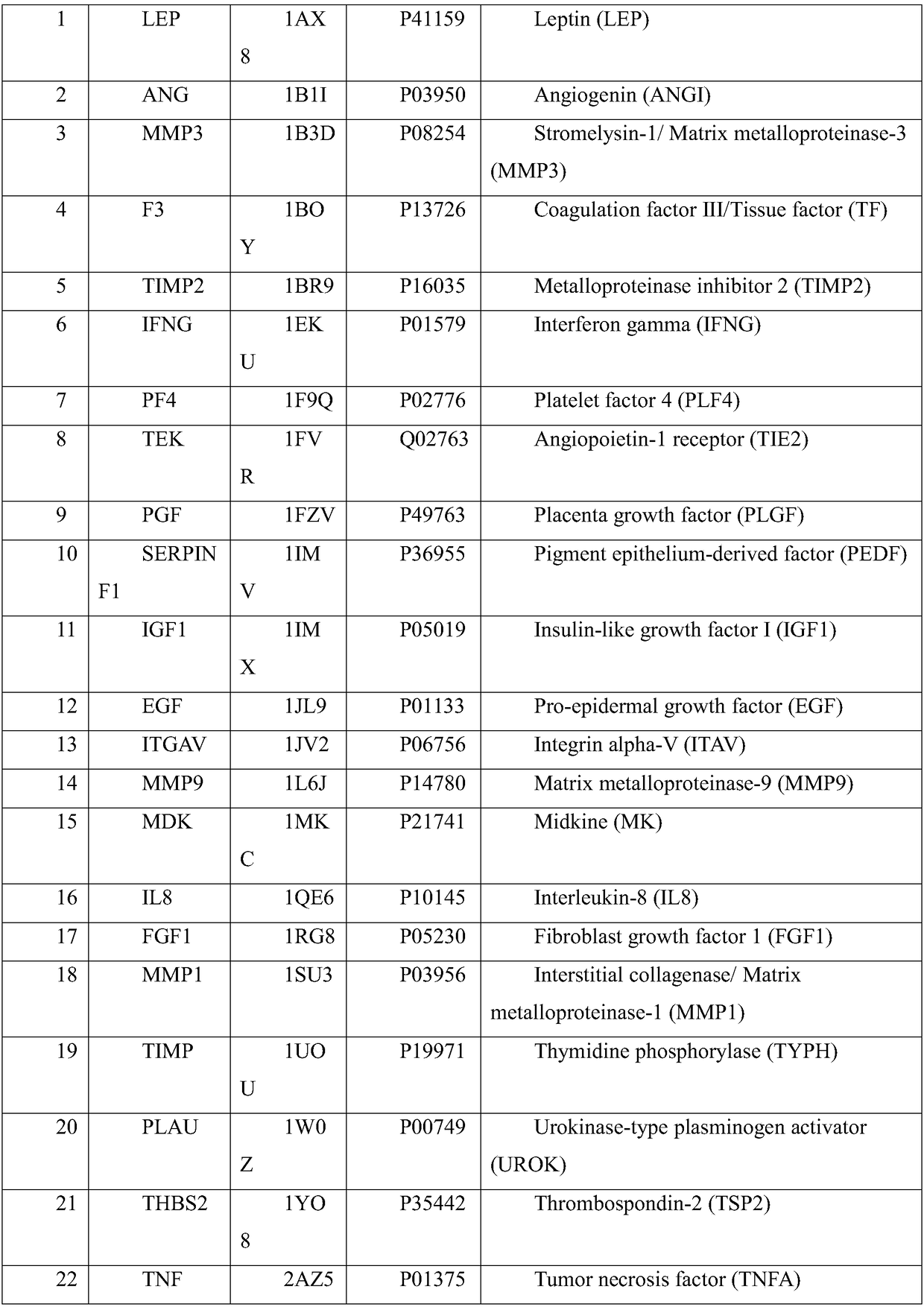Screening method for inhibiting angiogenesis targets through celecoxib
A technology of celecoxib and angiogenesis, applied in bioinformatics, used to analyze two-dimensional or three-dimensional molecular structures, instruments, etc., can solve the problem of lack of COX-2-independent biomarkers, weak tumor inhibition, loss of And other issues
- Summary
- Abstract
- Description
- Claims
- Application Information
AI Technical Summary
Problems solved by technology
Method used
Image
Examples
Embodiment Construction
[0022] 1. Screen protein
[0023] Select angiogenesis PCR chip including ANG, ANGPT1, ANGPT2, ANPEP, TYMP, FGF1, FGF2 (bFGF), FIGF (VEGFD), FLT1, JAG1, KDR, NRP1, NRP2, PGF, VEGFA, VEGFB, VEGFC, BAI1, COL4A3 , IL8, ANGPTL4, F3, PECAM1, PF4, PROK2, SERPINE1(PAI-1), SERPINF1, HIF1A, NOS3, SPHK1, CCL11(Eotaxin), CCL2(MCP-1), CXCL1, CXCL10(INP10), CXCL5(ENA78 / LIX), CXCL6(GCP-2), CXCL9(MIG), EDN1, IFNA1, IFNG, IL1B, IL6, MDK, TNF, CTGF, EFNA1, EFNB2, EGF, EPHB4, FGFR3, HGF, IGF1, ITGB3, PDGFA, S1PR1 , TEK(TIE2), TGFA, TGFB1, TGFB2, TGFBR1, CDH5, COL18A1, ENG(EVI-1), ERBB2(HER2), FN1, ITGAV, ITGB3, THBS1, THBS2, LECT1, LEP, MMP14, MMP2, MMP9, Proteins expressed by 84 genes including PLAU(uPA), PLG, TIMP1, TIMP2, TIMP3, AKT1, PTGS1, PTGS2, MMP1, MMP3 are used as potential receptor protein database. After searching the structure of each protein in PDB and UniProt protein structure database, the resolution of X-ray crystal structure was selected in NMR structural resolution For ...
PUM
 Login to View More
Login to View More Abstract
Description
Claims
Application Information
 Login to View More
Login to View More - R&D
- Intellectual Property
- Life Sciences
- Materials
- Tech Scout
- Unparalleled Data Quality
- Higher Quality Content
- 60% Fewer Hallucinations
Browse by: Latest US Patents, China's latest patents, Technical Efficacy Thesaurus, Application Domain, Technology Topic, Popular Technical Reports.
© 2025 PatSnap. All rights reserved.Legal|Privacy policy|Modern Slavery Act Transparency Statement|Sitemap|About US| Contact US: help@patsnap.com



